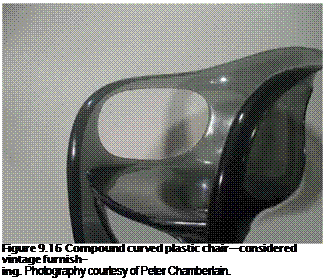IKEA is a successful business that originated in Sweden and targets large metropolitan markets offering contemporary design solutions and inexpensive furniture and accessories. IKEA is in line with very successful big box retailers and has stores throughout the world (Figure 9.14). In American cities such as Pittsburgh, the IKEA business model is to identify a critical mass of customers who can support the cost-effective operation in concert with a generally evolving product line. The IKEA customer is typically young, interested in design, and with a modest level of disposable income (Figure 9.15). IKEA responds well to design trends and relies on a high volume of sales and the introduction of new products each year to sustain growth. The process of purchasing furniture through IKEA is unique. Furniture is prepared flat-packed for customers to purchase from the distribution stores. Equally unique is the all-encompassing retail environment selling furnishings, accessories, lighting, rugs, food, and so on.
Alternative Retail
 One traditional marketing approach used to generate sales is to host a warehouse sale. DWR has successfully organized and promoted weekend sales of overstocked and slightly damaged products at significant savings by utilizing warehouse storage close to regional and metropolitan airports in order to facilitate the distribution of furniture that otherwise would be difficult to sell.
One traditional marketing approach used to generate sales is to host a warehouse sale. DWR has successfully organized and promoted weekend sales of overstocked and slightly damaged products at significant savings by utilizing warehouse storage close to regional and metropolitan airports in order to facilitate the distribution of furniture that otherwise would be difficult to sell.
Vintage design shops are everywhere. These are great places to find a Bertoia, Saarinen, or Eames chair or furniture designed by less well-known designers. Sometimes, remarkable designs (Figure 9.16) can be discovered in unexpected venues.
Guerrilla retail3 is a term used to describe the sale of
furniture in temporary places—off a truck, in a rental
space, at an exhibit, at a kiosk on the sidewalk, or in a parking lot, plaza, and so on (Figure 9.17).
|
|
|
|
|
|
|
|
Furniture showroom districts exist in major cities like New York, San Francisco, Boston, Chicago, Los Angeles, and Seattle (Figure 9.18). Bundling several showrooms together is common, forming a concentrated mall of design, often in the same building or on the same street. Examples of concentrated districts are the Pacific Design Center in West Hollywood, California; the International Trade Mart in Dallas, Texas; and the D & D Building in New York City. In Europe, there are areas in many cities that have become design districts in which showrooms are concentrated. Paustian and GUBI are two large furniture showrooms in Copenhagen that have contributed to the economic turnaround of an area that was previously an industrial and warehouse district (Figures 9.19 and 9.20).







